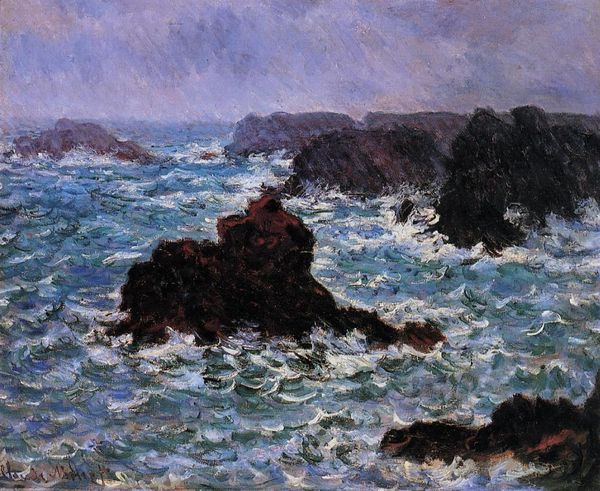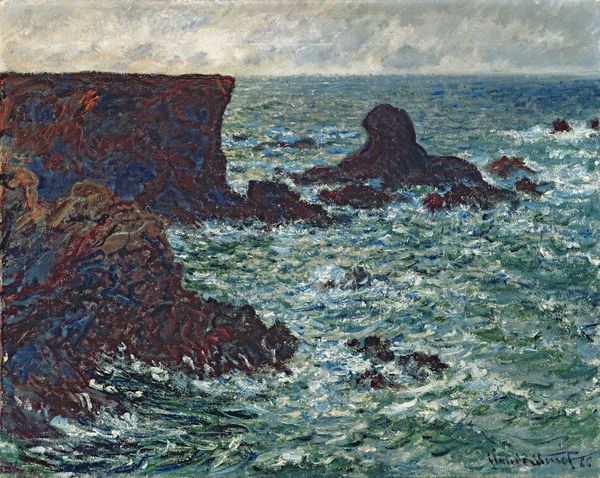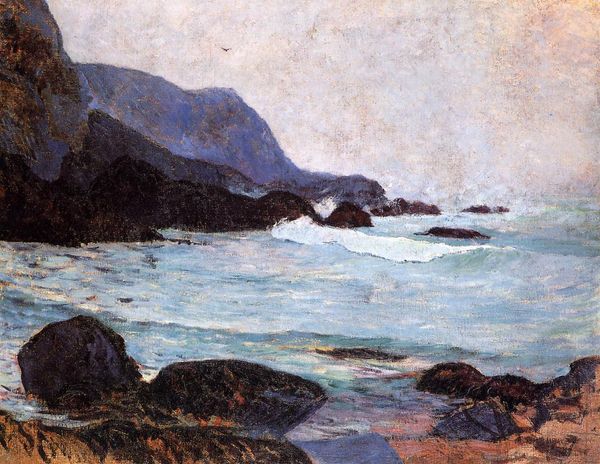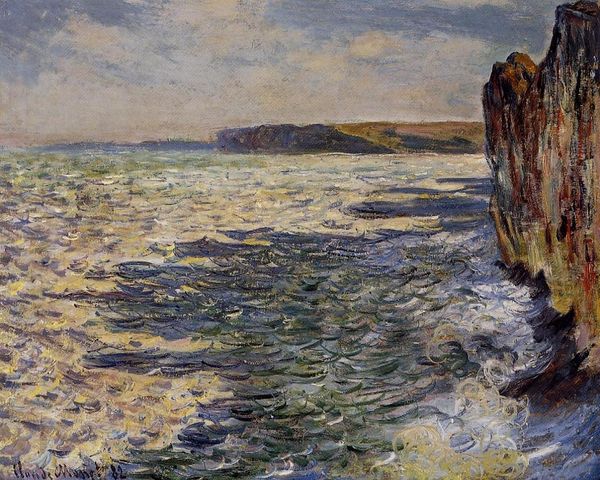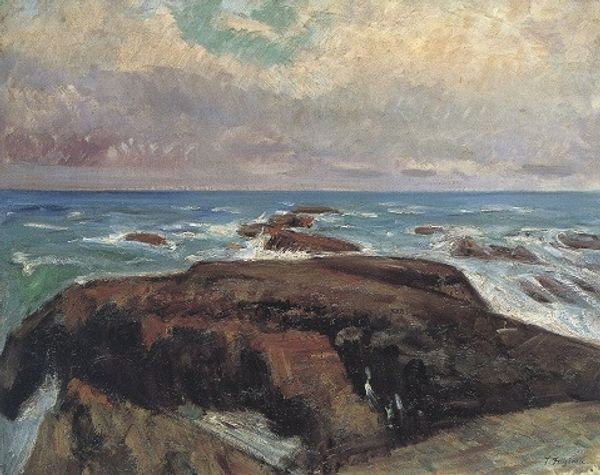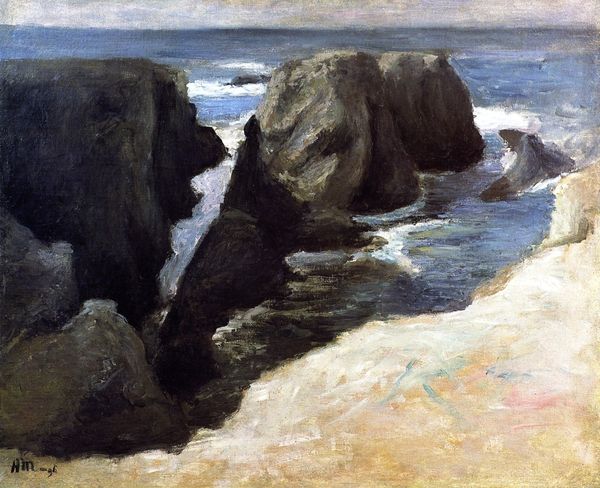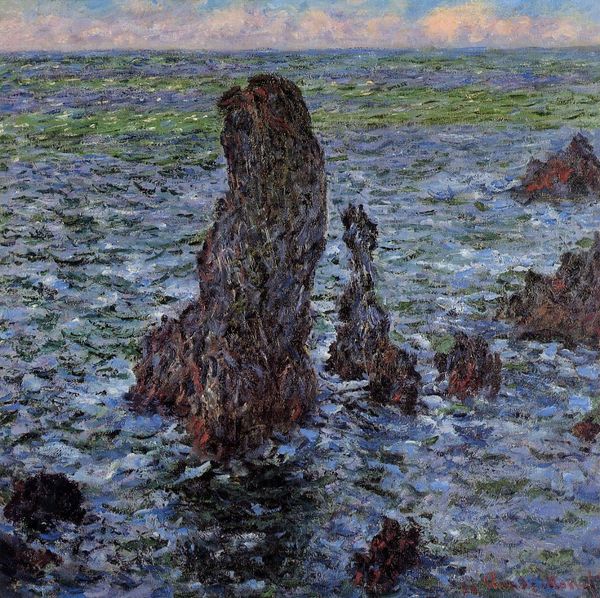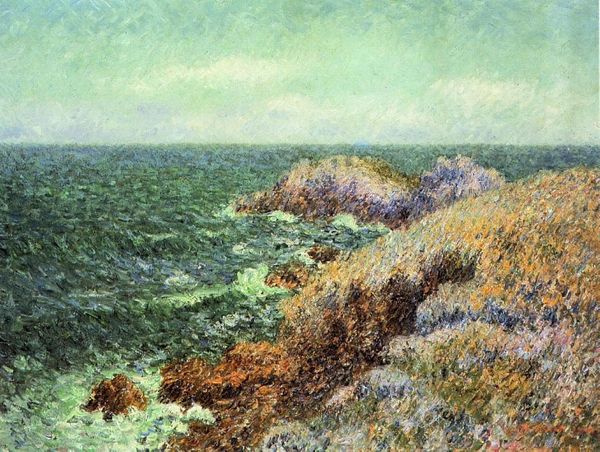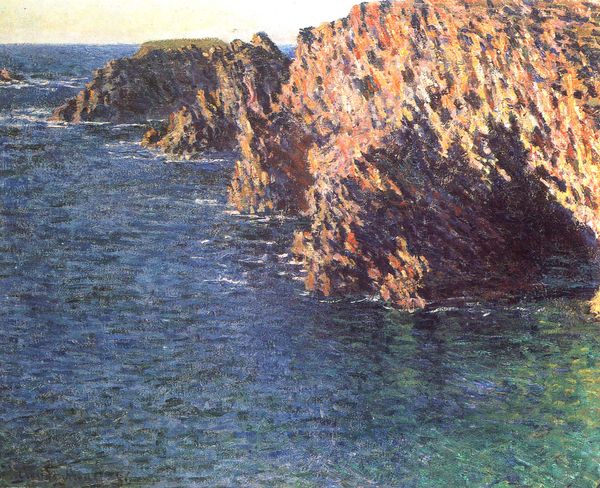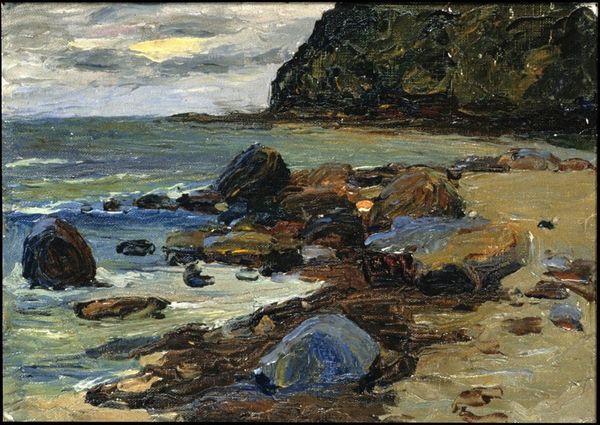
plein-air, oil-paint
#
sky
#
cliff
#
abstract painting
#
rough brush stroke
#
impressionism
#
plein-air
#
oil-paint
#
landscape
#
rock
#
paint stroke
#
water
#
natural texture
#
expressionist
#
sea
Copyright: Public domain
Curator: Take a moment to gaze upon Claude Monet's "Rocky Coast and the Lion Rock, Belle-Ile," painted in 1886 using oil on canvas. Editor: Immediately, I'm struck by the contrast between the rough, almost violent brushstrokes, and the muted color palette. It evokes a feeling of a powerful, yet subdued landscape. Curator: Monet's Impressionistic style sought to capture the fleeting moment, but there is a feeling of enduring strength. Note how the so-called Lion Rock rises out of the sea like a stoic guardian. It evokes an almost mythical presence within the natural world. Editor: Yes, the texture is quite compelling. You can almost feel the wind and spray coming off the water. Look at the application of the paint: short, choppy strokes of blue and green capture the churning sea, contrasted against the heavier strokes used to create the cliffs. It feels raw and immediate. Curator: Think of Belle-Île's position, a craggy island off the coast of Brittany, and the powerful sea traditions of the region. These imposing rocks were naturally formed, yet to the culture of this coastal region, they held perhaps sacred meaning. Monet brings that cultural continuity into the scene. Editor: The composition reinforces that idea. The cliffs on the left, cut off abruptly by the frame, imply an immensity beyond the canvas, underscoring the relentless, eroding force of nature against the unyielding rocks. Curator: Precisely, the rock formation acting almost as a steadfast monument in defiance of time. And the turbulent water and sky might echo human trials, reflecting our own struggle to find meaning and permanence amidst a constantly changing world. Editor: Well, whether Monet intended those layers of symbolism or simply wanted to record his visual impression, the painting remains a captivating study in color, texture, and dynamic composition. Curator: Indeed. We find in his rendering of the sea perhaps the image of our own depths as human beings. Editor: I'd agree. I'm now finding the scene, at first jarring, feels more hopeful somehow, in that solid geometry of stone defying liquid, and painted defiance too.
Comments
No comments
Be the first to comment and join the conversation on the ultimate creative platform.

